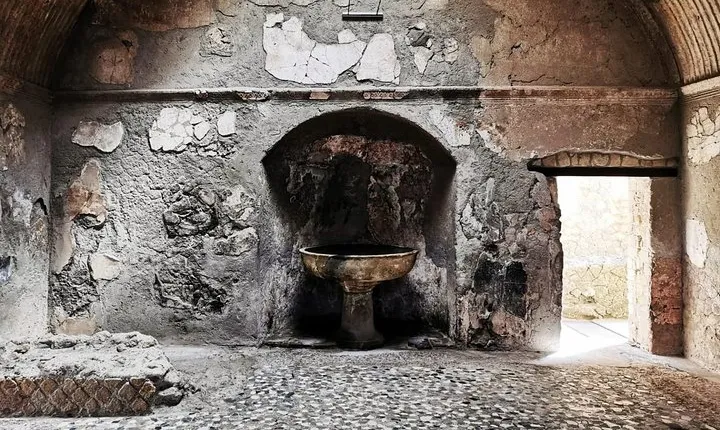Two-hour guided tour of Herculaneum with an Archaeologist

+2 photos
Herculaneum was founded, according to tradition, by Hercules. Like Pompeii the Roman town was buried during the 79 AD eruption of Mt Vesuvius. Numerous craftsmen and many rich and cultured patricians were drawn to the resort of Herculaneum because of its beautiful setting, overlooking the Bay of Naples. In 1997 Herculaneum was included in UNESCO's World heritage List. Herculaneum is broadly divided into five sections which are delineated by the two main streets (decumani) and three other thoroughfares (cardi). The town has various examples of different types of dwellings, all of which were overwhelmed by the sea of mud seeped into every nook. The particular interest of a visit to Herculaneum is that all timber structures (frameworks, beams, doors, stairs and partitions) were preserved by a hard shell of solidified mud, whereas at Pompeii they were consumed by fire. The houses were empty, but death caught up with the inhabitants as they tried to flee the city or make for the sea.
Please select a date
Activity package
to get availability.
Facilities
 Mobile voucher accepted
Mobile voucher accepted 2 hours
2 hours Available in English, Italian
Available in English, ItalianImportant information
Infants and small children can ride in a pram or stroller. Public transportation options are available nearby. Not recommended for travelers with poor cardiovascular health. Travelers should have at least a moderate level of physical fitness